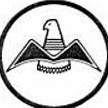-
Posts
11,394 -
Joined
-
Last visited
-
Days Won
150
Shadrach last won the day on May 23
Shadrach had the most liked content!

Shadrach replied to pilot-as14's topic in Vintage Mooneys (pre-J models)

Shadrach replied to mooneyflyfast's topic in General Mooney Talk

Shadrach replied to mooneyflyfast's topic in General Mooney Talk

Shadrach replied to mooneyflyfast's topic in General Mooney Talk

Shadrach replied to mooneyflyfast's topic in General Mooney Talk

Shadrach replied to mooneyflyfast's topic in General Mooney Talk

Shadrach replied to mooneyflyfast's topic in General Mooney Talk

Shadrach replied to mooneyflyfast's topic in General Mooney Talk

Shadrach replied to mooneyflyfast's topic in General Mooney Talk
We have placed cookies on your device to help make this website better. You can adjust your cookie settings, otherwise we'll assume you're okay to continue.